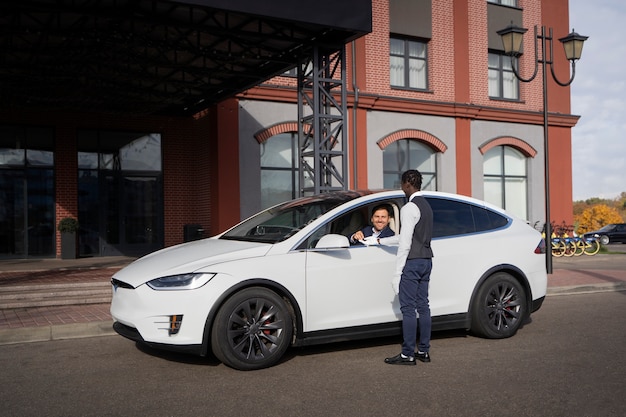
Tesla’s eligibility for federal tax credits might change significantly soon. Currently, the Tesla Model 3 qualifies for a federal tax credit of $7,500 for eligible buyers. However, starting January 1, 2024, this tax credit will reduce to $3,750 for the Model 3 Rear-Wheel Drive and Model 3 Long Range.
For those considering buying a Tesla in 2024, this isn’t great news. The situation could get even more challenging since only 10 electric vehicles will qualify for the full $7,500 tax credit next year. This means that even if your car of choice isn’t a Tesla, securing the full credit could be tough.
So, what’s causing this change, and how might it evolve? To qualify for the full EV tax credit, vehicles must meet certain requirements. The tax credit is divided into two parts. The first $3,750 is linked to the minerals used in the battery. Right now, 40% of these minerals must come from the U.S. or a country with a free trade agreement with the U.S. This requirement will increase to 60% in 2024 and continue rising in subsequent years.
The other half of the tax credit also concerns the battery. In 2023, 50% of the battery must be assembled in the U.S., which will jump to 60% in 2024 and keep rising over the years. Additionally, there are income limits: single filers can’t earn more than $150,000, heads-of-household are capped at $225,000, and couples filing jointly must earn below $300,000.
Car manufacturers are likely to face challenges meeting these battery requirements. Many source battery components from China, and while some are shifting production to the U.S., it will take time. This affects brands like Tesla, which is making efforts to move battery manufacturing stateside but still uses some batteries from China. As a result, not all Model 3 and Model Y versions will qualify for the full tax credit.
Other popular EVs will also face difficulties. For instance, the Ford Mustang Mach-E won’t be eligible for the full amount. Despite these challenges, most vehicles that previously qualified for the full tax credit will still get half of it, though some could lose eligibility entirely.
A very short list of electric cars will qualify for the full federal EV tax credit in the near future. Some Model 3 and Model Y variants will still qualify for the complete credit, particularly the Performance models. However, these requirements will keep changing, making it increasingly difficult to qualify unless manufacturers move more of their battery production to the U.S.
The federal EV tax credit has significantly boosted electric car sales by reducing the cost by up to $7,500. However, as it becomes rarer, buyers might not be able to rely on this benefit.
Car manufacturers are finding other methods to increase electric car sales, such as producing cheaper vehicles. Over time, the cost of building electric cars is decreasing, and companies can use technology from their expensive models in more affordable ones. Additionally, as electric cars become more common, the used car market will expand.
It’s unfortunate that the list of EVs eligible for tax credits is shrinking, which could impact car sales. While electric cars are becoming cheaper, this change won’t happen immediately. Hopefully, 2024 will bring more affordable electric cars, allowing buyers to find cost-effective options without depending on tax credits.